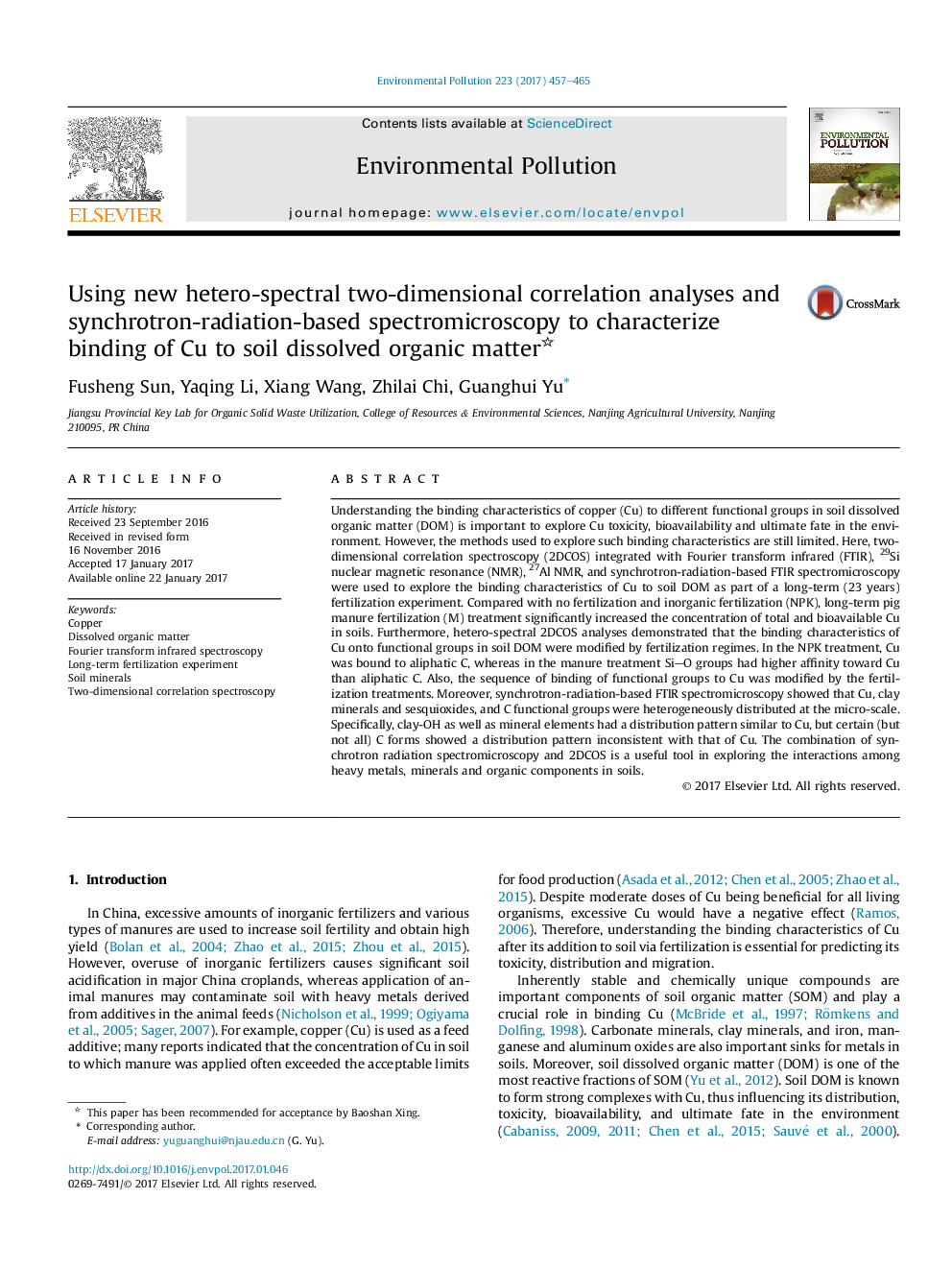| کد مقاله | کد نشریه | سال انتشار | مقاله انگلیسی | نسخه تمام متن |
|---|---|---|---|---|
| 5749326 | 1619150 | 2017 | 9 صفحه PDF | دانلود رایگان |

- The interactions and binding between Cu and functional groups is essential for their fates.
- Cu is bound to aliphatic C in the long-term inorganic treated soils.
- Si-O groups had higher affinity toward Cu than aliphatic C in the manure treated soils.
- The sequence of binding of functional groups to Cu was modified by the fertilization treatments.
- Cu, clay minerals and sesquioxides, and C functional groups were heterogeneously distributed.
Understanding the binding characteristics of copper (Cu) to different functional groups in soil dissolved organic matter (DOM) is important to explore Cu toxicity, bioavailability and ultimate fate in the environment. However, the methods used to explore such binding characteristics are still limited. Here, two-dimensional correlation spectroscopy (2DCOS) integrated with Fourier transform infrared (FTIR), 29Si nuclear magnetic resonance (NMR), 27Al NMR, and synchrotron-radiation-based FTIR spectromicroscopy were used to explore the binding characteristics of Cu to soil DOM as part of a long-term (23 years) fertilization experiment. Compared with no fertilization and inorganic fertilization (NPK), long-term pig manure fertilization (M) treatment significantly increased the concentration of total and bioavailable Cu in soils. Furthermore, hetero-spectral 2DCOS analyses demonstrated that the binding characteristics of Cu onto functional groups in soil DOM were modified by fertilization regimes. In the NPK treatment, Cu was bound to aliphatic C, whereas in the manure treatment SiO groups had higher affinity toward Cu than aliphatic C. Also, the sequence of binding of functional groups to Cu was modified by the fertilization treatments. Moreover, synchrotron-radiation-based FTIR spectromicroscopy showed that Cu, clay minerals and sesquioxides, and C functional groups were heterogeneously distributed at the micro-scale. Specifically, clay-OH as well as mineral elements had a distribution pattern similar to Cu, but certain (but not all) C forms showed a distribution pattern inconsistent with that of Cu. The combination of synchrotron radiation spectromicroscopy and 2DCOS is a useful tool in exploring the interactions among heavy metals, minerals and organic components in soils.
176
Journal: Environmental Pollution - Volume 223, April 2017, Pages 457-465